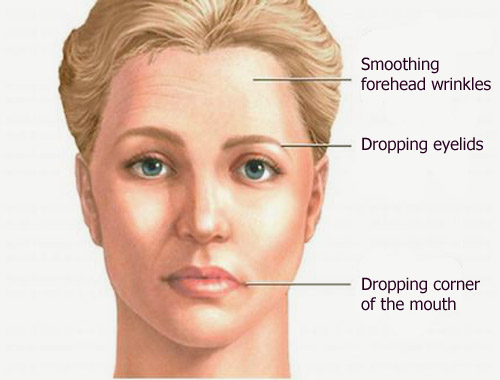Myasthenia gravis (MG)

Published: 18 Jun 2025
ICD9: 358.0 ICD10: G70.00 ICD11: 8C60
Myasthenia gravis (MG) is a chronic autoimmune neuromuscular disorder that causes weakness in the skeletal muscles, which are responsible for breathing and moving parts of the body.
Here's a breakdown:
![]() Autoimmune: The body's immune system mistakenly attacks its own tissues. In MG, it attacks the connection between nerves and muscles.
Autoimmune: The body's immune system mistakenly attacks its own tissues. In MG, it attacks the connection between nerves and muscles.
![]() Neuromuscular: Affecting the nerves and muscles.
Neuromuscular: Affecting the nerves and muscles.
![]() Weakness: The hallmark symptom. This weakness worsens with activity and improves with rest.
Weakness: The hallmark symptom. This weakness worsens with activity and improves with rest.
Here's a more detailed explanation:
![]() Normal Muscle Function:
Normal Muscle Function:![]()

![]() Nerves send signals to muscles to contract.
Nerves send signals to muscles to contract.![]()

![]() These signals travel across the neuromuscular junction (the space between the nerve and the muscle).
These signals travel across the neuromuscular junction (the space between the nerve and the muscle).![]()

![]() The nerve releases a chemical called acetylcholine (ACh), which binds to ACh receptors on the muscle.
The nerve releases a chemical called acetylcholine (ACh), which binds to ACh receptors on the muscle.![]()

![]() This binding triggers muscle contraction.
This binding triggers muscle contraction.
![]() In Myasthenia Gravis:
In Myasthenia Gravis:![]()

![]() The immune system produces antibodies that block, alter, or destroy the ACh receptors at the neuromuscular junction.
The immune system produces antibodies that block, alter, or destroy the ACh receptors at the neuromuscular junction.![]()

![]() This prevents ACh from binding effectively.
This prevents ACh from binding effectively.![]()

![]() As a result, the muscles don't receive the nerve signals properly, leading to muscle weakness.
As a result, the muscles don't receive the nerve signals properly, leading to muscle weakness.
Key Characteristics and Symptoms:
![]() Muscle Weakness: The primary symptom. Often fluctuates in severity.
Muscle Weakness: The primary symptom. Often fluctuates in severity.
![]() Fatigue: Weakness worsens with activity and improves with rest.
Fatigue: Weakness worsens with activity and improves with rest.
![]() Commonly Affected Muscles:
Commonly Affected Muscles:![]()

![]() Eye Muscles: Drooping eyelids (ptosis), double vision (diplopia). Often the first sign.
Eye Muscles: Drooping eyelids (ptosis), double vision (diplopia). Often the first sign.![]()

![]() Facial Muscles: Difficulty smiling, speaking, or chewing.
Facial Muscles: Difficulty smiling, speaking, or chewing.![]()

![]() Throat Muscles: Difficulty swallowing (dysphagia), choking, or changes in voice (dysarthria).
Throat Muscles: Difficulty swallowing (dysphagia), choking, or changes in voice (dysarthria).![]()

![]() Limb Muscles: Weakness in arms and legs, making it difficult to lift things, walk, or climb stairs.
Limb Muscles: Weakness in arms and legs, making it difficult to lift things, walk, or climb stairs.![]()

![]() Respiratory Muscles: In severe cases, weakness can affect the muscles that control breathing, leading to a myasthenic crisis, which is a medical emergency.
Respiratory Muscles: In severe cases, weakness can affect the muscles that control breathing, leading to a myasthenic crisis, which is a medical emergency.
Important Considerations:
![]() Variability: The severity and the specific muscles affected vary significantly from person to person.
Variability: The severity and the specific muscles affected vary significantly from person to person.
![]() Onset: Can occur at any age, but more common in women younger than 40 and men older than 60.
Onset: Can occur at any age, but more common in women younger than 40 and men older than 60.
![]() Diagnosis: Typically involves a physical exam, neurological exam, blood tests (to detect ACh receptor antibodies), and electrodiagnostic tests (nerve conduction studies and repetitive nerve stimulation).
Diagnosis: Typically involves a physical exam, neurological exam, blood tests (to detect ACh receptor antibodies), and electrodiagnostic tests (nerve conduction studies and repetitive nerve stimulation).
![]() Treatment: There is no cure, but treatments can help manage symptoms and improve quality of life. Treatments include medications (such as cholinesterase inhibitors and immunosuppressants), thymectomy (surgical removal of the thymus gland), and plasmapheresis or IVIg (immunoglobulin therapy).
Treatment: There is no cure, but treatments can help manage symptoms and improve quality of life. Treatments include medications (such as cholinesterase inhibitors and immunosuppressants), thymectomy (surgical removal of the thymus gland), and plasmapheresis or IVIg (immunoglobulin therapy).
In summary, Myasthenia Gravis is a challenging autoimmune disease characterized by muscle weakness caused by a breakdown in the communication between nerves and muscles. Early diagnosis and treatment are crucial to manage the condition and prevent complications.